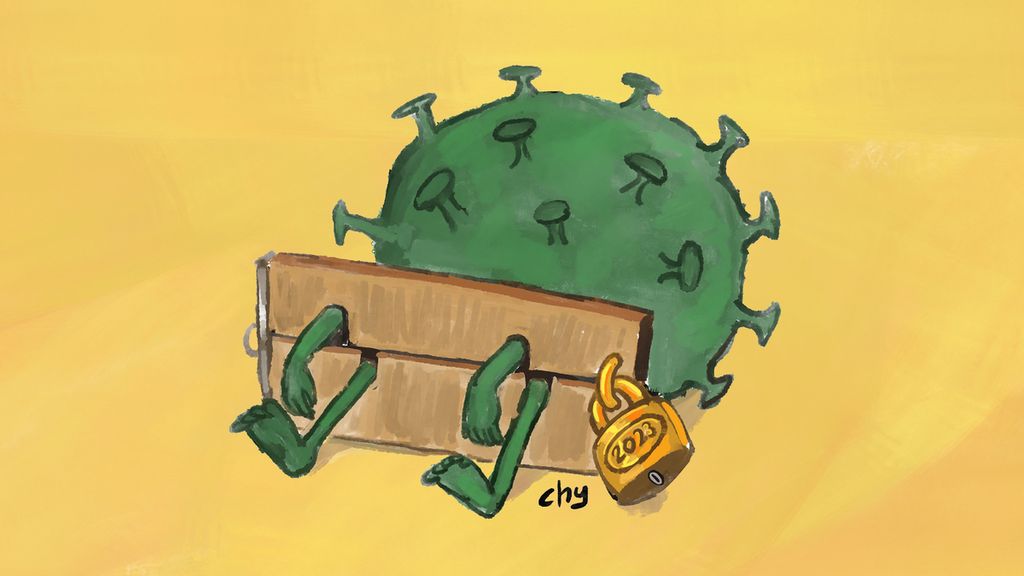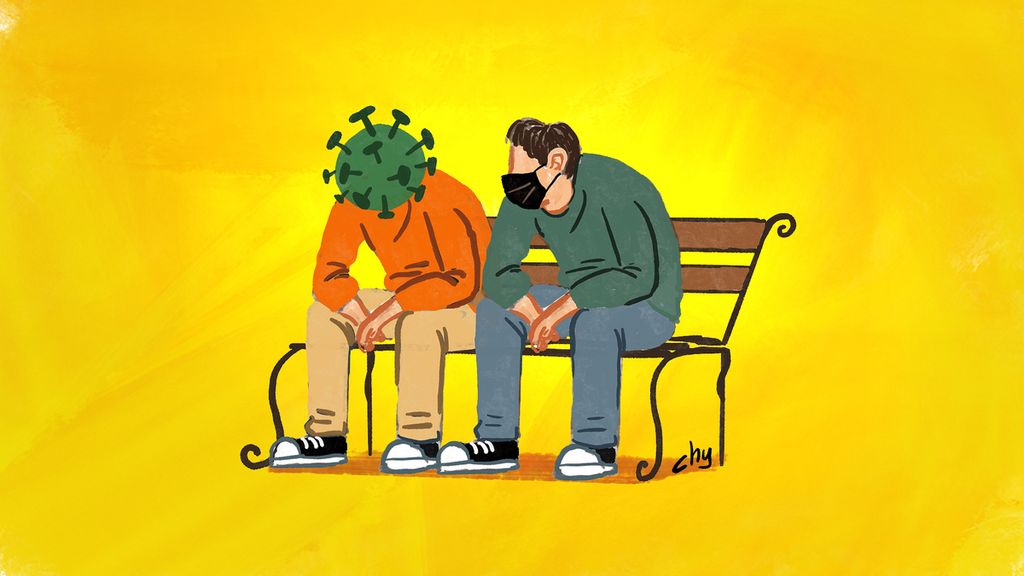
At the end of the year, on 21 December 2022, the Director General of the World Health Organization (WHO) Tedros Adhanom Ghebreyesus stated that during 2022, COVID-19 had significantly decreased. The WHO director general also hopes that the COVID-19 emergency situation can be declared over in 2023.
Since reaching its peak at the end of January this year, the weekly number of COVID-19 deaths in the world has fallen by almost 90 percent. The hope that next year COVID-19 will no longer be a global health emergency was also conveyed by the director general of WHO on 14 December 2022 by looking at the weekly death rate, which was at its lowest since March 2020.
The criteria for declaring the end of the pandemic will be discussed at the WHO Emergency Committee meeting in January 2023. The same committee made the recommendation on 30 January 2020 that COVID-19 — at that time it was still called the novel coronavirus (2019-nCoV) — was declared a “Public Health Emergency of International Concern” (a public health emergency that affected the world) before finally being declared a pandemic by the director general of WHO on 11 March 2020.
Activity restrictions and healthy behavior
However optimistic we are about COVID-19 in 2023, there are still challenges that need to be overcome. Surveillance, testing and tracking of cases must continue to run well so that we know exactly what the epidemiological situation is, including the development of the virus. We also still have to increase vaccination coverage, in Indonesia and the world, as a whole.
We also need to maintain optimum health services so that cases are managed properly and, if possible, prevent death.
For Indonesia, the number of cases and deaths has also fallen. The number of cases per day, in the highest weekly average this year, occurred on 20 February 2022, namely 55,675 people. Meanwhile on 20 December 2022, there were 1,367 people. The death rate per day in the highest weekly average this year occurred on 9 March 9, 2022, namely 300 people, and the figure on 20 December 2022 was down to 23 people.
Also read:
> G20 and Global Health Architecture
> Coping with New Covid-19 Variants
This epidemiological data, plus serological data and other socioeconomic aspects of society, is the main consideration for the government in revoking the imposition of restrictions on community activities (PPKM). President Joko “Jokowi” Widodo is currently still waiting for the results of studies from all relevant ministries and institutions. If cases and deaths as well as other public-health indicators are supportive, of course various forms of easing policies can be implemented.
For that, it is necessary to consider at least two things. First, we know that China, which has also recently relaxed its regulations, has in fact then faced a high increase in cases and deaths. What is happening in China is not necessarily the case in other countries that are easing policies, but it still needs to be analyzed with vigilance before easing restrictions in Indonesia. We can do a simulation at a health-service facility, just in case if it turns out that cases in Indonesia also increase.
Second, on 20 December 2022, The New York Times published a story entitled "It's Time for New Yorkers to Mask Up Again, Mayor Adams Says".
In its contents, New York Mayor Eric Adams again advised his citizens to wear masks in certain circumstances to anticipate an increase in cases due to three diseases: COVID-19, flu and RSV (respiratory syncytial virus) infection during the holiday season and winter in the United States. Similar policies have also begun to be considered in other cities.

Some experts call these three diseases “tripledemic” or “triplendemic”. We do not have winter, but we do have Christmas and New Year holidays. According to President Jokowi, there is the potential for movement of 44 million people during Christmas and New Year, and we all have to be careful. This should also be taken into consideration in setting health policies for the end of 2022 and early 2023.
Apart from the two aforementioned, and also outside of what will be the decision regarding PPKM, what we need to do as members of society is to give high priority to protecting our health, that of our families and communities. The painful experience of COVID-19 teaches us a lesson: the impact of this disease can truly devastate various aspects of life, individuals or communities. Therefore, whether there is PPKM or not, let us continue to maintain our health and avoid contracting disease ourselves.
Also read:
> Intensifying Covid-19 Genomic Surveillance
> Unexplained Severe Acute Hepatitis
Regarding the face masks, it is important to continue to wear them in closed spaces, including buses and trains during Christmas and New Year, and in open spaces if there are crowds that have the potential to transmit respiratory diseases, including COVID-19.
We also know that vaccination is an important modality to prevent disease. The polio outbreak in Special Region of Aceh occurred, among other reasons, due to low coverage of polio vaccination in children. For COVID-19, elderly residents who have not received the second booster vaccine should get it immediately. Likewise the first booster for the wider community whose coverage is still below 30 percent.
Other habits that need to be maintained are listed in the CERDIK slogan (periodic health checks, get rid of cigarette smoke and other pollution, diligent exercise, balanced diet and manage stress).
Post-pandemic
In addition, regarding COVID-19, of course we hope that in 2023 the pandemic will end. In this case keep in mind several things that will happen. The SARS-CoV-2 virus that causes COVID-19 will still be with us even after the pandemic is over. So, it is still possible that someone will fall ill even though the situation is more under control. The experience of the previous pandemic due to the H1N1 virus which ended in 2010 shows that, until now, after more than 10 years, the virus is still with us. So is with the SARS-CoV-2 virus.
In addition, there will still be various questions regarding COVID-19. For example, we have not fully understood the phenomenon of "long-COVID" cases, how to manage them and their future prognosis. We also still need to learn a lot in dealing with changes in the SARS-CoV-2 virus. It is not impossible that new variants or subvariants will emerge, which of course we hope will not turn violent again.
We know there will be outbreaks and pandemics again, but we do not know the type of disease and when it will occur.
It is not impossible that there will still be questions about the effectiveness of the COVID-19 vaccine against new variants/subvariants and whether vaccine repetitions and/or booster tests are needed, and so on.
One very important thing is that when the COVID-19 pandemic is over, we need to be vigilant and seriously prepare ourselves for another outbreak and/or pandemic in the future. We know there will be outbreaks and pandemics again, but we do not know the type of disease and when it will occur. For this reason, a healthy lifestyle needs to be a priority in our lives.
From a public-policy perspective, it is best to prevent outbreaks or pandemics. If, nevertheless, it cannot be prevented, a good surveillance system must be in place so that an outbreak/pandemic can be detected as early as possible so that casualties can be controlled. If it turns out that an outbreak/pandemic occurs, there needs to be assurance that health service facilities can handle it properly. All of this needs to be properly prepared from now on. Do not be late.
Tjandra Yoga Aditama
Postgraduate director at YARSI University, former director of Communicable Diseases WHO Southeast Asia, former director general of Disease Control
This article was translated by Kurniawan Siswo.

